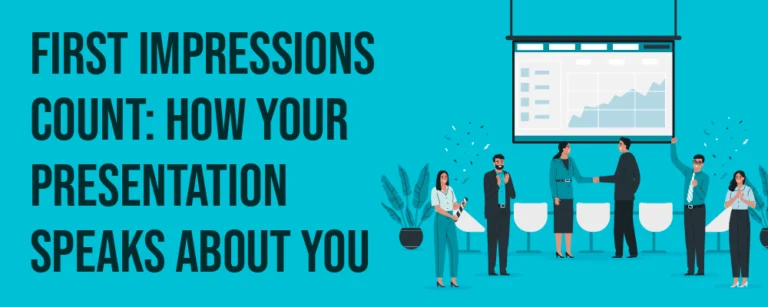
Table of Contents
In today’s business world, effective communication is crucial. Consultants play a vital role in helping organizations achieve their goals, and one powerful tool they often use is PowerPoint presentations. A well-designed PowerPoint can capture an audience’s attention, convey complex information clearly, and leave a lasting impression. In this guide, we will explore the art of creating seamless narratives in PowerPoint presentations, providing valuable tips and techniques for consultants to enhance their communication skills.
The Art of Clarity in PowerPoint Presentations
When crafting a PowerPoint presentation, clarity should be your utmost priority. Your goal is to convey your message in a concise and easily understandable manner. Avoid cluttered slides, excessive text, and complex graphics that may confuse your audience. Instead, focus on using clear and concise language, impactful visuals, and effective data representation. Remember, a clear and well-structured presentation will leave a lasting impression on your audience and increase the chances of your message being understood and remembered.
One of the key aspects of achieving clarity in your PowerPoint presentation is to carefully consider the content you include. It is important to strike a balance between providing enough information to support your message and overwhelming your audience with excessive details. Remember, your slides should serve as visual aids to enhance your presentation, not as a substitute for your spoken words.
Another important element to consider is the use of fonts and typography. Selecting the right font can greatly impact the readability of your slides. Opt for clear and legible fonts, such as Arial or Calibri, and avoid using fancy or decorative fonts that may be difficult to read. Additionally, make sure to use an appropriate font size that is easily readable from a distance. This will ensure that your audience can follow along without straining their eyes.
In addition to the content and typography, the layout and design of your slides also play a crucial role in achieving clarity. Keep your slides clean and uncluttered, with ample white space to allow your audience to focus on the key points. Use a consistent layout throughout your presentation to maintain a sense of coherence and make it easier for your audience to follow along.
When it comes to visuals, choose images and graphics that are relevant to your message and enhance the understanding of your content. Avoid using generic or stock images that may not resonate with your audience. Instead, opt for high-quality visuals that are visually appealing and support your message. Remember, a picture is worth a thousand words, so choose your visuals wisely to convey your message effectively.

Furthermore, when presenting data, it is important to use charts and graphs that are easy to interpret. Avoid complex or cluttered charts that may confuse your audience. Instead, opt for simple and visually appealing representations of your data, such as bar graphs or pie charts. This will make it easier for your audience to grasp the information and understand the key insights you are trying to convey.
Lastly, practice is key to delivering a clear and impactful PowerPoint presentation. Take the time to rehearse your presentation and familiarize yourself with the content and flow of your slides. This will help you feel more confident and ensure a smooth delivery. Additionally, consider seeking feedback from colleagues or friends to get a fresh perspective on your presentation and make any necessary improvements.
Achieving clarity in your PowerPoint presentations is essential to effectively communicate your message. By carefully considering the content, typography, layout, visuals, and practicing your delivery, you can create a presentation that is clear, concise, and memorable. Remember, the art of clarity lies in simplicity, so strive to simplify your message and make it easily understandable for your audience.
Structuring Your Presentation for Maximum Impact
To make your PowerPoint truly impactful, you need to pay attention to its structure. Divide your presentation into logical sections that flow seamlessly from one to the next. Consider using a table of contents slide to provide an overview of your presentation and guide your audience through the different sections. With a well-structured presentation, you can keep your audience engaged and ensure that your key messages are delivered effectively.
When it comes to structuring your presentation, it’s important to think about the overall flow and organization of your content. Start by identifying the main points or ideas that you want to convey to your audience. These could be the key takeaways, the main arguments, or the solutions you are proposing.
Once you have identified your main points, you can start organizing them into logical sections. Think about the order in which you want to present your ideas. Should you start with an introduction to set the context? Or should you dive straight into the main content? Consider what will be most effective in capturing your audience’s attention and keeping them engaged throughout.
One effective way to structure your presentation is to use a problem-solution approach. Start by presenting the problem or challenge that your audience is facing. This will help them understand the context and why your presentation is relevant to them. Then, present your proposed solution or solutions, explaining how they can address the problem and bring about positive outcomes.
Another approach is to use a chronological or step-by-step structure. This works well for presentations that involve a process or a series of events. By presenting your content in a logical sequence, you can help your audience follow along easily and understand the progression of your ideas.
Remember to include transitions between sections to ensure a smooth flow. Transitions can be as simple as a brief summary of what you have covered so far and a preview of what’s coming next. This will help your audience stay connected and mentally prepare for the upcoming content.
In addition to structuring your presentation, it’s also important to consider the visual elements. Use consistent formatting and design throughout your slides to create a cohesive and professional look. This includes using the same font, color scheme, and layout. Visual consistency will not only make your presentation visually appealing but also help your audience focus on the content rather than being distracted by inconsistent design choices.
Furthermore, consider using visuals such as images, charts, and graphs to enhance your message. Visuals can help break up text-heavy slides and make your presentation more engaging. They can also help illustrate complex concepts or data in a more digestible way.
Lastly, don’t forget to rehearse your presentation to ensure a smooth delivery. Practice speaking clearly and confidently, and time yourself to make sure you stay within the allotted time. Rehearsing will help you become familiar with your content and reduce the chances of stumbling or forgetting important points during the actual presentation.
By paying attention to the structure of your presentation and incorporating these tips, you can create a PowerPoint that is not only visually appealing but also delivers your key messages effectively. Remember, a well-structured presentation is more likely to keep your audience engaged and leave a lasting impact.

The Role of an Agenda in Guiding Your Audience
A well-defined agenda can greatly assist you in guiding your audience through your PowerPoint presentation. By clearly outlining the topics you will cover, you set expectations and help your audience understand the flow of your presentation. This not only provides a sense of structure but also helps your audience follow along and stay engaged throughout. Remember to highlight important points within your agenda to pique the interest of your audience and keep them focused on your presentation.
When it comes to delivering a successful presentation, preparation is key. Crafting a comprehensive agenda is an essential part of this preparation process. Think of your agenda as a roadmap that will lead both you and your audience towards the desired destination of knowledge and understanding.
One of the primary benefits of having an agenda is that it creates a sense of anticipation among your audience. By clearly stating the topics you will cover, you generate curiosity and intrigue. This anticipation can help captivate your audience from the very beginning, making them eager to learn more about what you have to say.
Furthermore, an agenda serves as a visual aid that helps your audience navigate through the different sections of your presentation. It acts as a signpost, guiding them from one topic to another. This visual representation of the presentation flow allows your audience to mentally prepare for each section and understand how they all fit together to form a cohesive whole.
Another advantage of using an agenda is that it allows you to manage time effectively. By breaking down your presentation into specific topics and allocating time slots for each, you can ensure that you cover all the necessary information within the given timeframe. This not only helps you stay on track but also demonstrates your professionalism and respect for your audience’s time.
Moreover, an agenda can be a valuable tool for audience engagement. By highlighting important points or key takeaways within your agenda, you can spark curiosity and generate interest. This technique can be especially effective when dealing with complex or technical subjects. By giving your audience a glimpse of what’s to come, you can create a sense of anticipation and motivate them to actively participate in the presentation.
Lastly, an agenda can serve as a reference point for your audience. By providing them with a clear outline of the topics covered, you enable them to revisit specific sections or refresh their memory after the presentation. This can be particularly useful for presentations that involve a lot of information or for audiences who may want to delve deeper into a particular topic discussed.
An agenda plays a crucial role in guiding your audience through your PowerPoint presentation. It not only provides structure and clarity but also generates anticipation, aids in navigation, helps manage time effectively, promotes audience engagement, and serves as a reference point. So, the next time you prepare for a presentation, make sure to invest time in crafting a well-defined agenda that will enhance the overall experience for both you and your audience.
Designing Divider Slides for Effective Transitions
In a lengthy presentation, it’s important to use divider slides to mark the transition between different sections. Design these slides thoughtfully, creating visual breaks that help your audience process the information presented so far. Use compelling imagery, relevant quotes, or thought-provoking questions to create a smooth transition between topics. Well-designed divider slides not only enhance the visual appeal of your presentation but also add structure and coherence to your overall narrative.
Creating Independent Comprehension in Your Presentations
One of the challenges of a PowerPoint presentation is ensuring that each slide can stand alone and convey its message independently. Too often, presenters rely on their speaking points to explain the content of each slide, leaving the audience confused when they review the presentation later. To overcome this, make sure each slide contains concise and clear information. Use descriptive headings, bullet points, and visuals to reinforce your message. By making each slide self-explanatory, you empower your audience to comprehend and engage with the content, even outside the context of your presentation.
Crafting a Table of Contents for Your PowerPoint
A well-crafted table of contents slide can serve as a roadmap for your audience, aiding in easy navigation and comprehension of your presentation. Include section titles or key topics, with corresponding slide numbers, to allow your audience to follow along and refer back to specific points of interest. A clear and informative table of contents ensures that your audience can quickly find the information they need and makes your presentation more accessible and user-friendly.
Defining Clear Sections in Your Presentation
Clear sections in your PowerPoint presentation help break down complex information into manageable parts. Use subheadings and visual cues such as color schemes or slide layouts to clearly delineate different sections. This enhances the overall organizational structure of your presentation and makes it easier for your audience to follow and absorb the information presented. By segmenting your presentation into cohesive sections, you create a more accessible and digestible narrative for your audience.
Enhancing Audience Experience with Structured PowerPoints
By following the principles of structured PowerPoint presentations, you can greatly enhance the overall experience for your audience. Strategic use of visuals, clear sectioning, and concise language work together to create a seamless flow, keeping your audience engaged from start to finish. The more enjoyable and effective the presentation experience, the better your chances of conveying your key messages and achieving your desired outcomes.
Tips for Making Your PowerPoint Stand Out
While structure and clarity are essential, there are additional ways to elevate your PowerPoint presentations and make them truly memorable. Consider incorporating interactive elements, such as polls or quizzes, to actively involve your audience. Infuse your presentation with storytelling techniques to create a narrative that resonates emotionally with your audience. Harness the power of persuasive visuals, such as charts and graphs, to convey data in a visually compelling manner. By combining these elements, you can create a PowerPoint presentation that stands out and leaves a lasting impact.

The Consultant's Guide to Memorable PowerPoint Presentations
As a consultant, your PowerPoint presentations are a reflection of your expertise and professionalism. By honing your skills in creating seamless narratives, you can deliver presentations that captivate your audience and drive meaningful results. Remember to prioritize clarity, structure your presentation thoughtfully, and leverage the power of visual communication. With these principles in mind, you can become a master of PowerPoint and take your consulting career to new heights.




